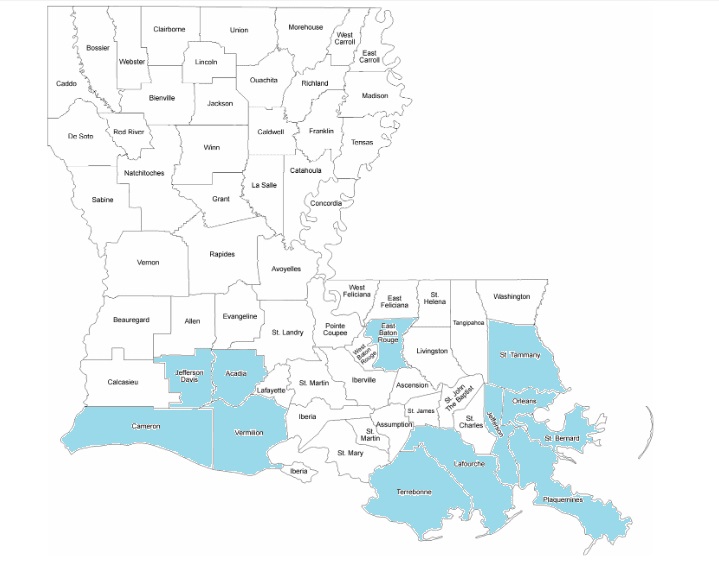


(1981-01; formerly 82-5). A third-year(?)
bird seen at Pontchartrain Beach, Lake Ponchartrain, New Orleans on
11 November 1981 (erroneously dated as 1982 in First LBRC Report) (David Muth, Norton Nelkin, Dan Purrington, Jack Reinoehl); photographed by Dan Purrington.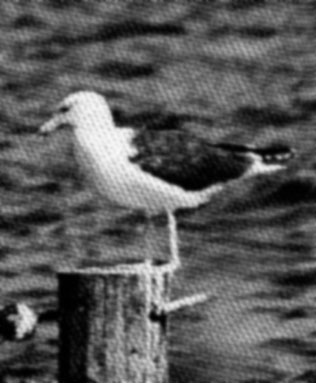
Photo by Dan Purrington
A first-winter immature (1982-42) at the New Orleans city dump, Orleans Parish on 28 February 1982 (Mark Robbins*, Dan Purrington, Steven W. Cardiff*, B. Mac Myers III, Davic Muth).
A first- winter immature (1982-46) photographed on Lake Pontchartrain at Seabrook Bridge, New Orleans, Orleans Parish on 28-29 March 1982 (B. Mac Myers III*, Dan Purrington; Jack Reinoehl, Mike Braun, Bill Eley, Bruce Crider). Both records may pertain to the same individual. There was only one previous record for Louisiana, from Ponchartrain Beach, New Orleans, Orleans Parish on 11 November 1981 .
One in first basic plumage (1985-59; formerly 86-72) on 5 Jan. 1985, Lafourche: 5 mi. W Grand Isle; Ronald J. Stein, David Muth (Muth 1985, p. 177).
One adult (1985-6) along "Rutherford Beach," west of the old mouth of the Mermentau River, Cameron Parish, on 2 March 1985 (Tom Kee).
One female (1985-70) molting from juvenal to first basic plumage on 30 September 1985, Cameron: 5 mi. W old mouth Mermentau River; Steven W. Cardiff (LSUMZ 127610) and Donna L. Dittmann (*). This was the first specimen for the state.
One third year (1988-84; formerly 89-123) on 27 Mar. 1988, Lafourche: Fourchon Beach; Robert D. Purrington, B. Mac Myers III (ph), NN. Date and locality erroneously reported as "28 Mar." and "Fourchons" in AB 42(3)447.
One in definitive basic plumage (1988-90; formerly 89-131) on 9 and 29 Oct. 1988, Lafourche: Fourchon Beach and Elmer's Island; David P. Muth, R. D. Purrington, Gwen B. Smalley (ph) (AB 43(1):1l8). A report from the same locality on 8 Oct. was initially believed to be the same bird. Upon closer inspection of the reports, the age of the bird did not agree between the sighting on 8 Oct., and those of 9 and 29 Oct. The 8 Oct. record will be reviewed separately.
One adult in alternate plumage (1989-88) on 26 Feb. 1989, Lafourche: Fourchon Beach; Robert D. Purrington, David P. Muth, LO (ph; AB 43(2):326).
One female in first alternate plumage (1989-132) on 8 May 1989, Cameron: 10 mi. W old mouth Mermentau River; Donna L. Dittmann (ph) & Steven W. Cardiff (LSUMZ #138123; AB 43(3):493).
One adult (1991-05) on 13 Jan 1991, Lafourche: Fourchon Beach; David P. Muth; AB 45(2): 285.
One adult (1991-053) on 27 October 1991, Lafourche: Fourchon Beach;
Norton Nelkin and
Robert D. Purrington
(ph only).
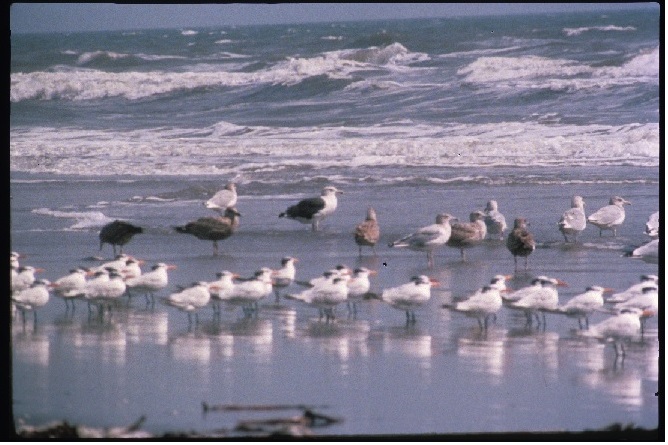
Photo by Robert D. Purrington
One adult (1991-61) on 7 Dec 1991, Lafourche: beach at Port Fourchon; Alfred E. and Gwen B. Smalley (ph).
One first winter (1991-063) on 21 December 1991, St. Bernard: Arabi, Crescent Acres Landfill; Curtis A. Marantz (ph). Reportedly first spotted by Steven W. Cardiff.
One (1992-76) in first basic plumage on 22 Feb 1992, Jefferson: Nine Mile Point on Mississippi River, Peter H. Yaukey; AB 46(2): 277.
One (1993-27) in first basic plumage on 9 Jan 1993, St. Bernard: BFI Crescent Acres Landfill near Chalmette; David P. Muth and Jon L. Dunn (ph); AB 47(2): 267.
One 1st alternate molting to 2nd basic plumage (1994-81) from 18-19 Jun 1994, Orleans: New Orleans, Lake Pontchartrain at Seabrook boat launch; David P. Muth (ph); NASFN48(5):952 indicates bird was present 'to at least Aug. 27.'
One adult winter (1994-051) on 30 December 1994, Orleans: New Orleans, Seabrook Bridge; Phillip A. Wallace (ph).
One third year (1995-074) on 26 March 1995, Orleans: New Orleans, Seabrook Bridge;
Phillip A. Wallace
(ph) and Peter Yaukey (notes).
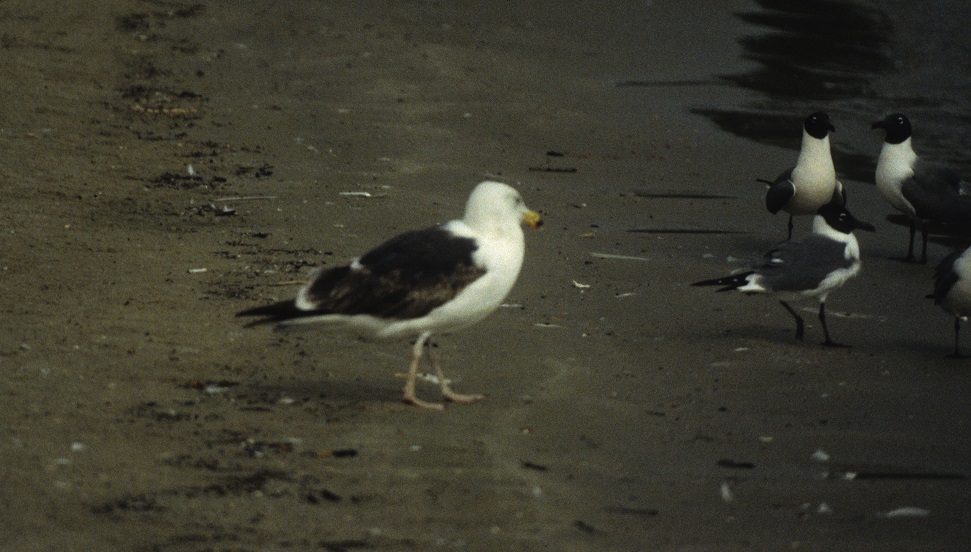
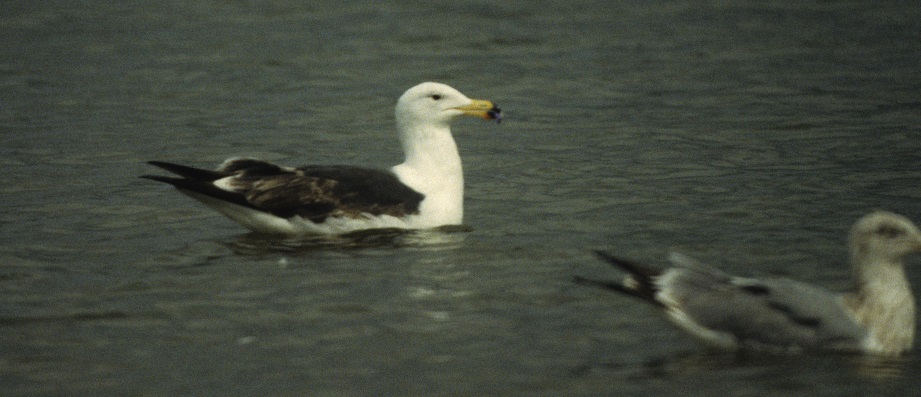
Photos by Phillip Wallace
One immature in first-summer/second-winter plumage (1995-085) on 16 September 1995, Plaquemines: Southwest Pass Mississippi River; Steven W. Cardiff.
One (1996-25) in first basic plumage on 2 & 10 Mar 1996, Lafourche: Fourchon Beach, Phillip Wallace (ph taken 2 Mar); LOS News 174: 8.
One (1996-30) in first alternate plumage on 14 Apr 1996, Cameron: W. end of
Rutherford Beach (Broussards Beach); Paul E. Conover (ph); LOS News 174: 8.
Video by Paul Conover
One (1996-29) in first alternate plumage on 26-28 Apr 1996, Cameron: W. end of
Rutherford Beach (Broussards Beach); Paul E. Conover (ph), Steven W. Cardiff (card
only); LOS News 174: 8. No. 96-26 and No. 96-30 (above) are referred to as "one-two
first-year birds Apr. 14-28" in NASFN 50(3): 292. Comparisons of photographs of this
and record No. 96-30 indicate that two separate birds were involved; a third individual
was collected at the same site on 5 May 1996 (record No. 96-72; Dittmann et al. 1998).

Photo and video by Paul Conover
One female in first alternate plumage (1996-72) on 5 May 1996, Cameron: 9 mi. W of old mouth Mermentau River (Broussard Beach); Steven W. Cardiff (LSUMZ 162247) and Donna L. Dittmann (*) (FN 50(3):292; LOS 174).
One adult in basic plumage (1997-05) on 25 January 1997, Jefferson: Grand Isle; B. Mac Myers III and Phillip A. Wallace. Reportedly found by Gay Gomez.
One first-year (1997-04) on 16 February 1997, St. Tammany: Mandeville, small boat harbor on E end of town; B. Mac Myers III and Phillip A. Wallace.
One first winter (1997-004) on 16 February 1997, St. Tammany: Mandeville, Mandeville marina; B. Mac Myers III (field notes with sketch) and Phillip A. Wallace (field notes with sketch).
One probable fourth year (1997-17) on 9 Mar. 1997, Lafourche: between Fourchon Lake and Gulf of Mexico, end of 17th Street; Phillip A. Wallace (ph) and B. Mac Myers III (ph)(FN51(4):882).
One (1998-20) in fourth basic plumage on 11 Jan 1998, Lafourche: Fourchon Beach; B. Mac Myers III (ph) and R. D. Purrington (card only).
One 2nd alternate molting to 3rd basic plumage (1998-10) on 28 Mar 1998, Lafourche: Port Fourchon, fill area at south end of main pond; B. Mac Myers III (ph), Phillip A. Wallace, and George Payne (ph only); FN52(3):342.
One first basic (1999-036) on 14 March 1999, Cameron: Broussard Beach; Richard L. (Rick) Knight.
One (1999-24) in first basic plumage on 2 Apr 1999, Lafourche: Fourchon Beach; Phillip Wallace (ph) and Cecil C. Kersting; apparently present to 22 Apr (fide David L�Hoste). The report of an individual (age not noted) at the same locality on 28 Mar 1999 (LOS News 187: 2) is apparently erroneous.
One (2001-10) in first basic plumage on 7 May 2001, Cameron: Rutherford Beach; Joseph P. Kleiman (ph) and Jason Weckstein (ph); LOS News 198: 13, NAB 55(3): 309.
Two (2001-22), including one adult on 4 Feb 2001, and presumably the same adult and one in first basic plumage on 10 Feb 2001, Jefferson: Grand Isle State Park; John P. Sevenair (4 Feb) and M. Mark Swan (ph of both birds on 10 Feb).
One adult/near adult (2002-051) on 14 October 2002, Lafourche: Fourchon Beach W of end of Fourchon
Rd. (Hwy. 3090);
B. Mac Myers III (ph).
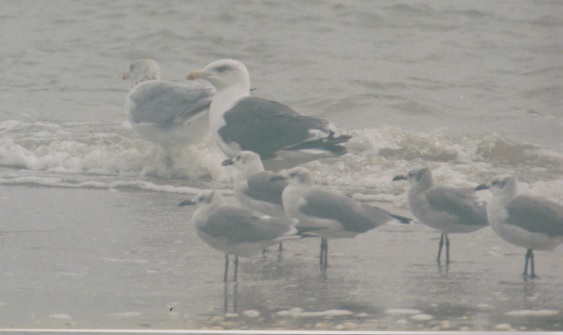
Photo by B. Mac Myers III
One female molting to 2nd basic plumage (2003-01) on 18 Jun 2003, Plaquemines: mouth
South Pass of Mississippi River, 29o00'04.0"N, 89o08'52.9"W; Steven W. Cardiff (LSUMZ
173680) and Donna L. Dittmann (*), David P. Muth (ph only); NAB57(4):503 (ph), 504.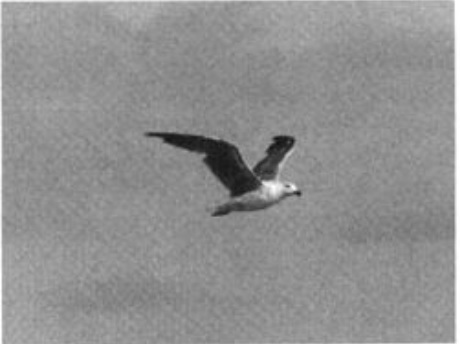
Photo by David Muth from North American Birds
One adult (2003-039) on 11 October 2003, Lafourche: Fourchon Beach W from end of Hwy. 3090 towards
Belle Pass;
Phillip A. Wallace and B. Mac Myers III (ph).

Photo by B. Mac Myers III
One in 1st basic plumage (2005-01) on 27 Feb 2005, Lafourche: Belle Pass;
Phillip A.
Wallace
(ph).

Video still by Phillip Wallace
Two in 1st basic plumage (2007-34) on 7 Feb 2007, Jefferson: Grand Terre Island; Donna L. Dittmann (ph) and Steven W. Cardiff; NAB61(2):281.
One first-year immature (2007-020) on 24 February 2007, Jefferson:
Grand Isle, near terminus of Caminada Rd.;
Justin Bosler
(ph).
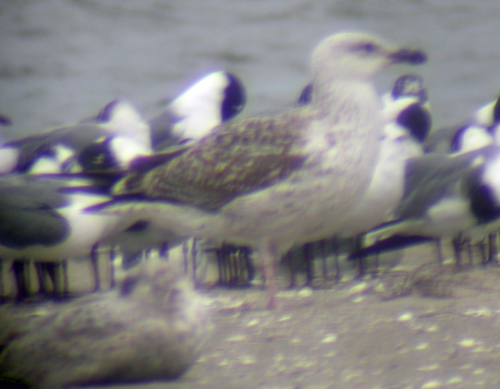
Photo by Justin Bosler
One molting to 3rd basic plumage (2007-28) on 13-14 Apr 2007, Jefferson: Grand Isle,
vicinity of Exxon fields;
Phillip A. Wallace
(ph), Donna L. Dittmann (ph), and Steven W.
Cardiff; NAB61(3):461.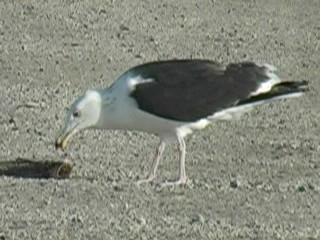
Photo by Phillip Wallace
One adult (2008-23) on 7 February 2008,
Terrebonne: Timbalier Island;
B. Mac Myers III
(ph).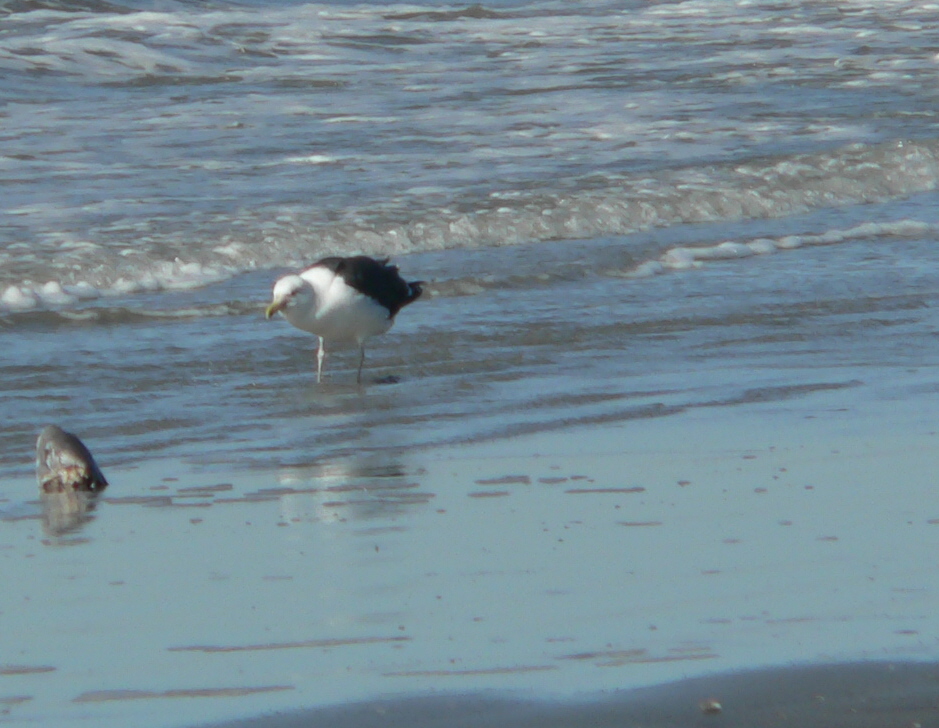
Photo by B. Mac Myers III
One adult or near adult (2009-014) on 3 February 2009, Terrebonne:
Timbalier Island, N 24.077650o, W 90.527433o;
B. Mac Myers III
(ph).
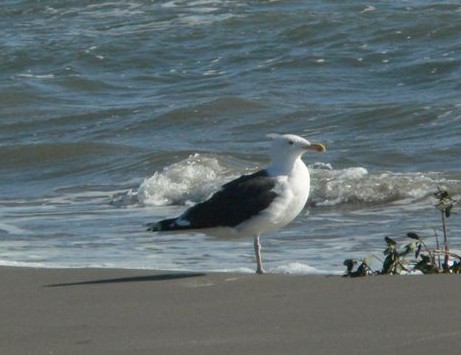
Photo by B. Mac Myers III
One very worn third alternate molting to
definitive basic (2009-55) on 21 August 2009, Cameron:
Holly Beach;
Tom Finnie
(ph).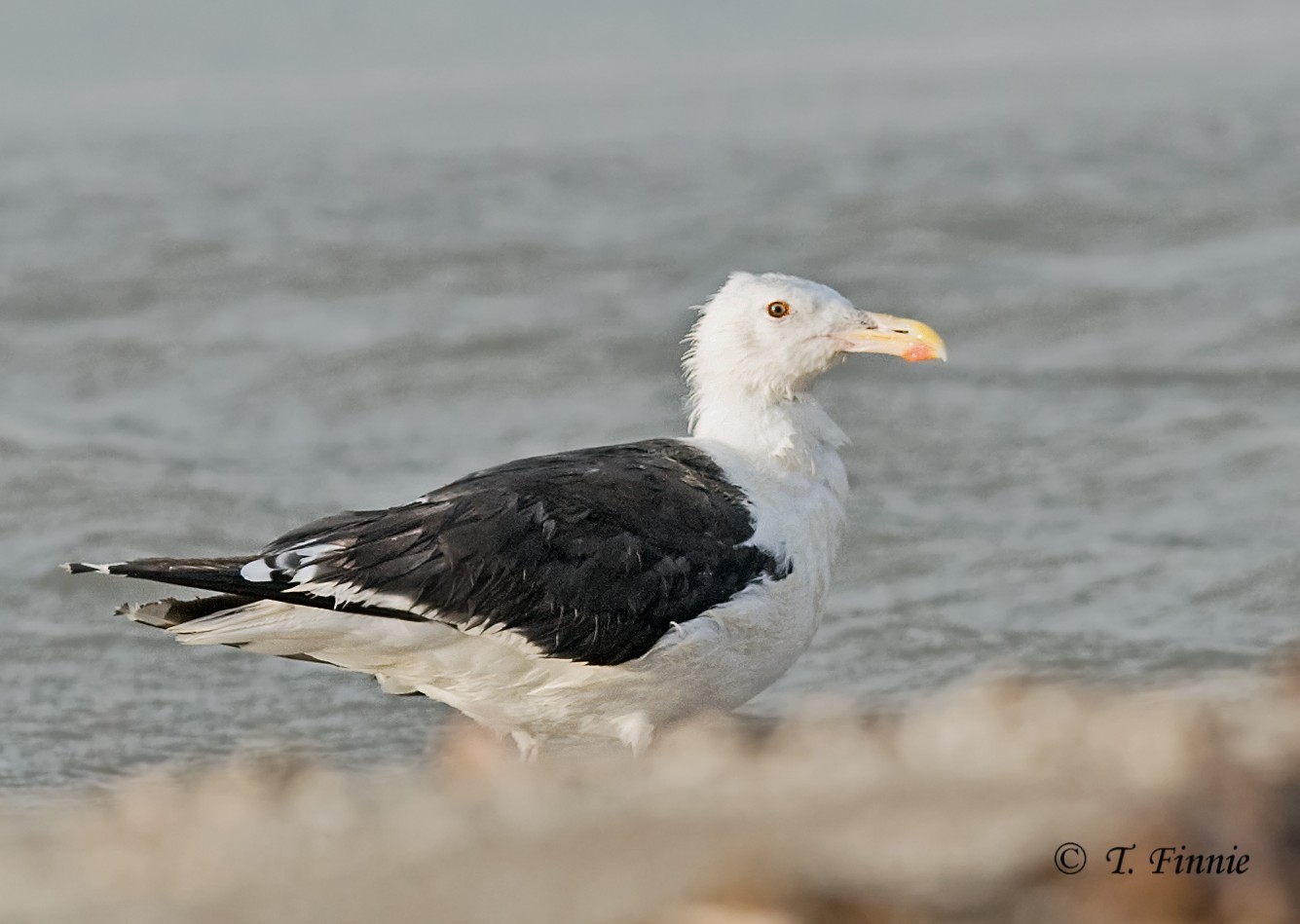
Photo by Tom Finnie
One molting to third basic (2010-69) on 5 May 2010, Plaquemines: Chaland Headlands, �middle Chaland�between Pass La Mer and Chaland Pass (ENE of Grand Isle), Steven W. Cardiff and Donna L. Dittmann (ph).
Three (two second basic, one first/second basic; 2010-64) on 25 August 2010, Plaquemines: East Grand Terre Island; Donna L. Dittmann (ph) and Steven W. Cardiff (ph).
One (2011-144) on 1-5 March 2011, Jefferson: Elmer's Island WMA; Colin Boeh (ph).
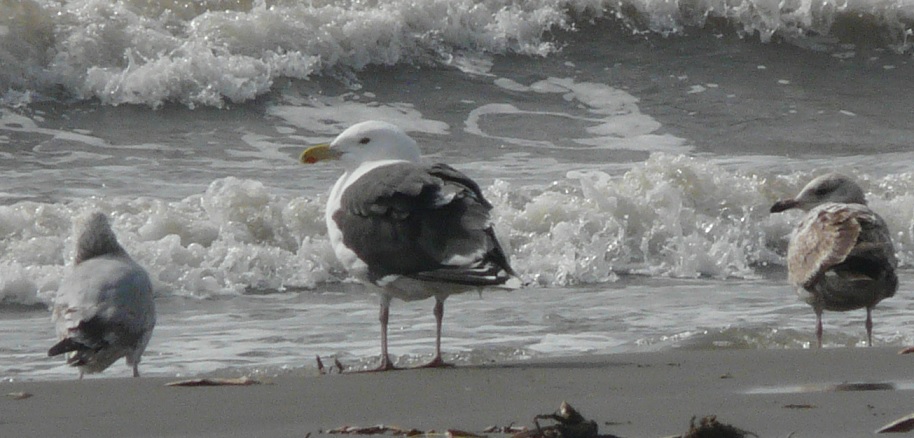
Photo by Colin Boeh
One first basic (2011-04) on 3 March 2011,
Terrebonne: Isles Dernieres, Whiskey Island, Mary Chris
Harrison
(ph).
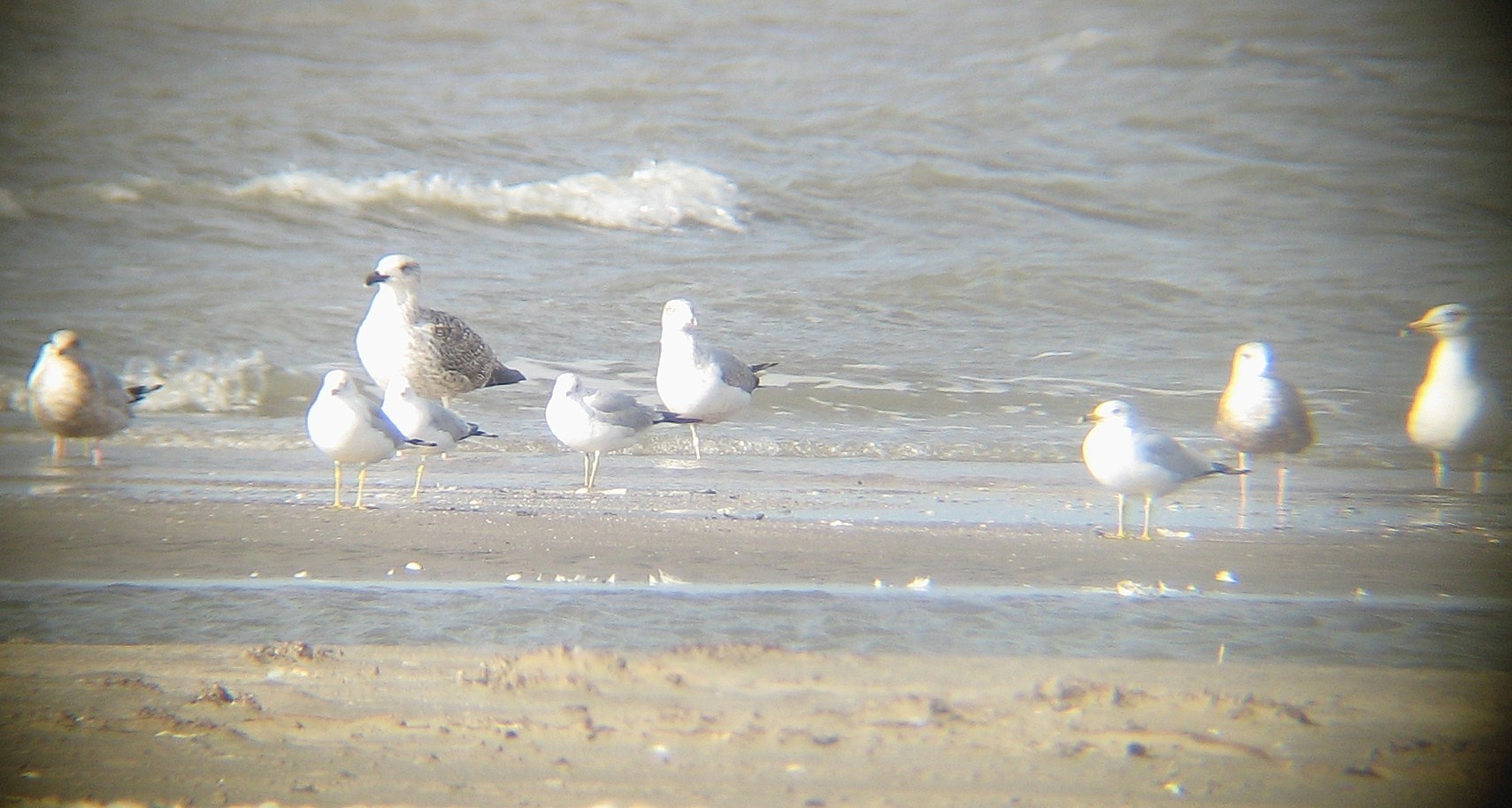
Photo by Mary Chris
Harrison
One first year (2011-020) on 15 March 2011, Plaquemines: Grand Terre Islands, East Grand Terre Island; Justin Bosler (ph).
One adult (2012-067) on 18 March 2012, Jefferson: Elmer's Island;
Phillip A. Wallace and Robert D. Purrington
(ph only).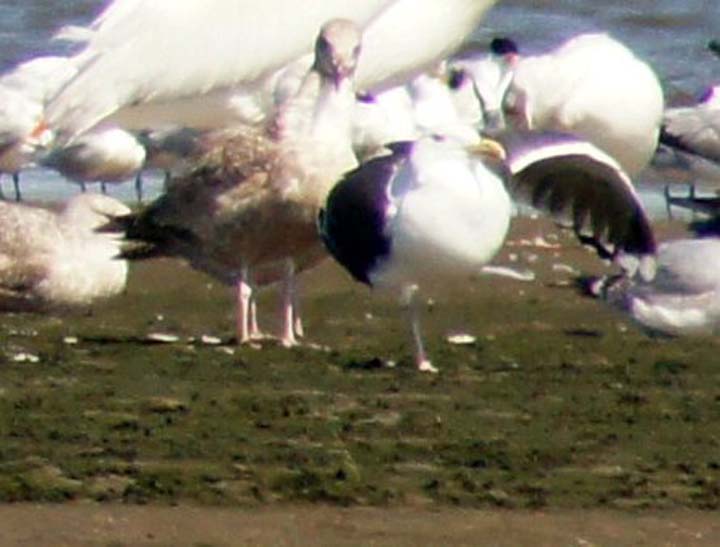
Photo by Robert D. Purrington
One adult (2013-091) on 17 December 2013, Terrebonne: Isles Dernieres,
Whiskey Island;
Robert C. Dobbs
(ph).
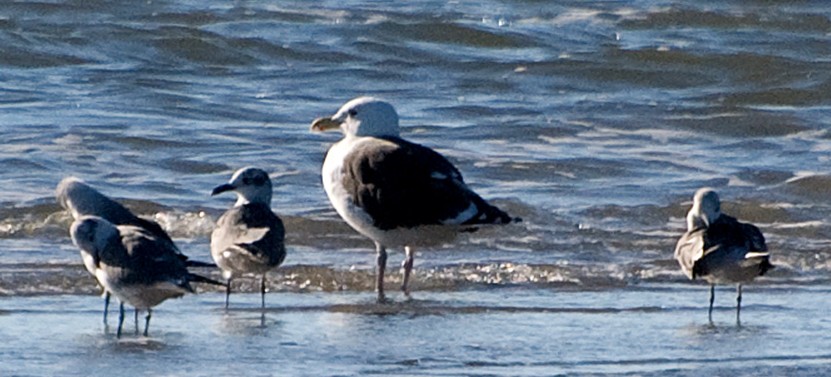
Photo by Robert C. Dobbs
One first basic (2014-008) on 10 February 2014, Vermilion: mouth of Freshwater Bayou at Gulf of Mexico, at
approximately N 29.5336o, W92.3087o;
Paul E. Conover and
Dave Patton
(ph only).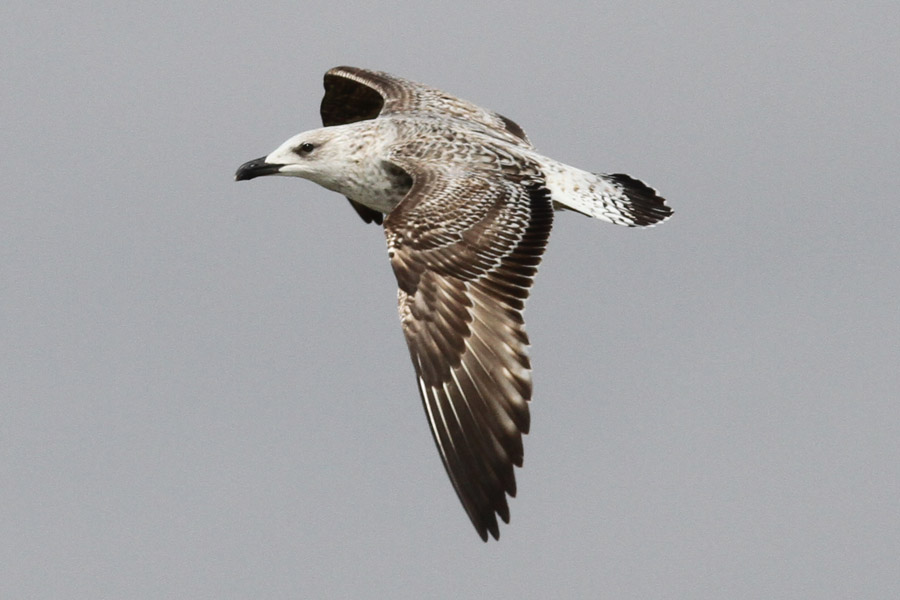
Photo by Dave Patton
One first-year immature (2014-041) on 13 April 2014, Jefferson: Grand Isle, Grand Isle SP;
Dan O�Malley
(ph).

Photo by Dan O�Malley
One immature (2014-071) on 8 October 2014, and 14 January and 9 February 2015, Jefferson: Elmer�s Island WMA and
vicinity; Matt Conn
(ph only),
Donna L. Dittmann
(ph) and Steven W. Cardiff.
First found by Greg Lavaty, Richard DeMay, and Matt Conn.
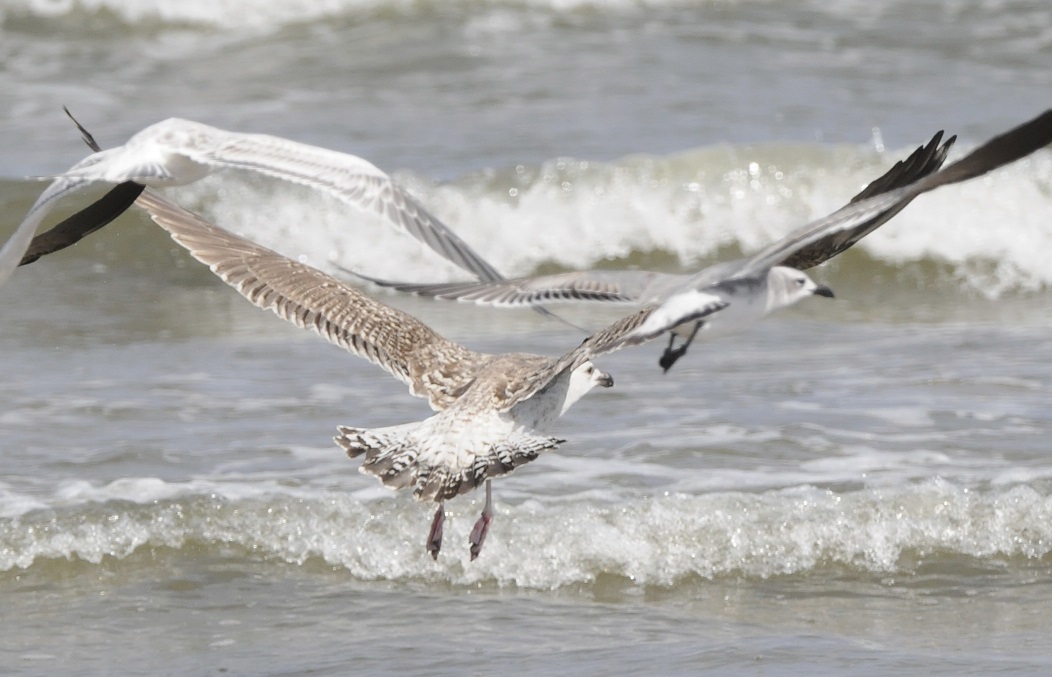
Photo by Donna L. Dittmann
One first-cycle immature (2015-066) on 16 December 2015, Jefferson/Lafourche: Elmer�s Island WMA, beach area near parish line and mouth of Bayou Von Thunder, approx. 1.5-2.5 km W of where WMA entrance road intercepts beach; Donna L. Dittmann and Steven W. Cardiff .
One first year (2016-006) on 29 January 2016, East Baton Rouge: Zachary, W. Irene Road landfill; J. V. Remsen (ph).
One first-year immature (2017-051) on 28 October 2017, Cameron: Broussard Beach;
Paul E. Conover (ph).
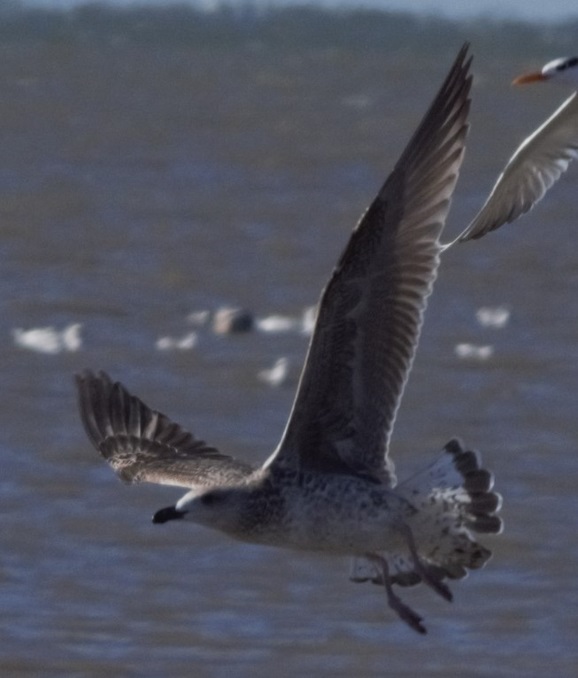
Photo by Paul E. Conover
One first-cycle immature (2018-007) on 6 January 2018, Acadia;
Paul E. Conover (ph).
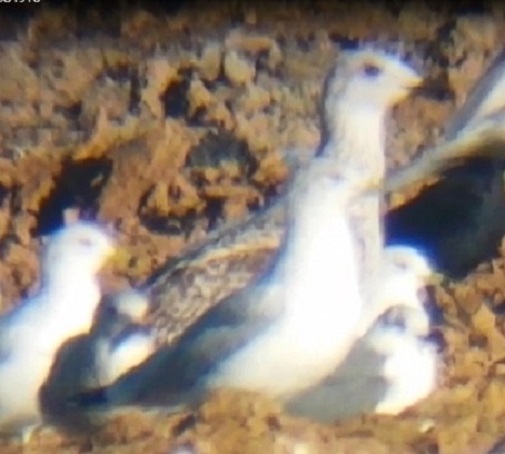
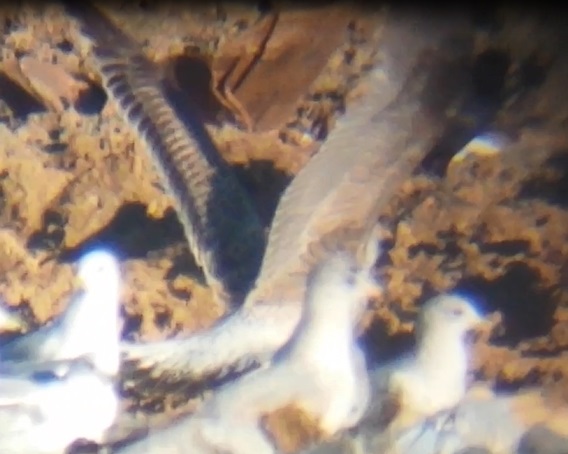
Photos by Paul E. Conover
One first-cycle immature (2018-013) on 13 January 2018, Jefferson Davis: Welsh Landfill;
Paul E. Conover (ph + video)
and
J. V. Remsen
(photo only).
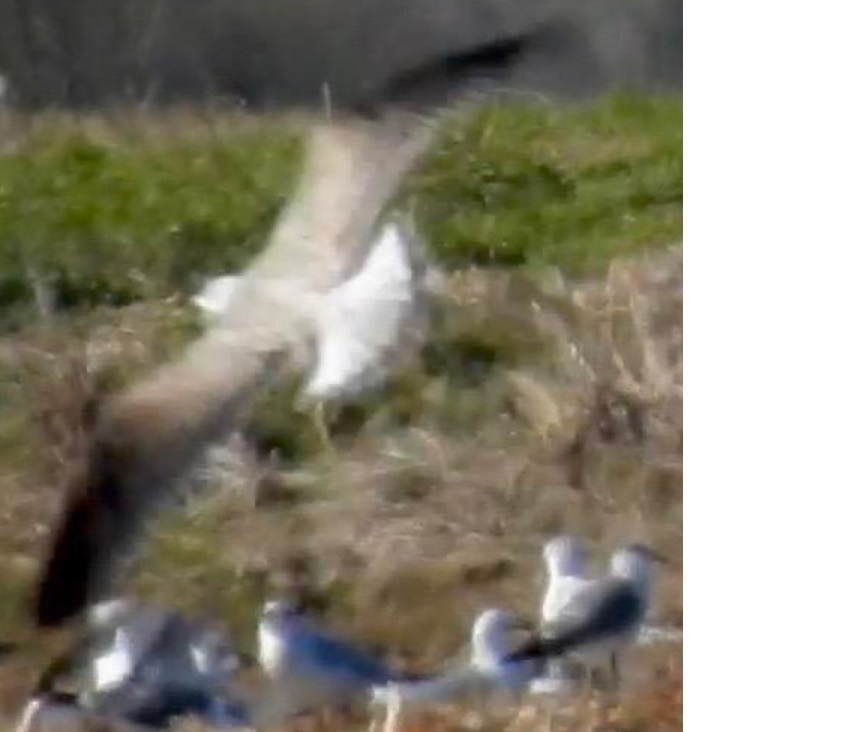
Photo by J. V. Remsen
One first-cycle immature (2018-014) on 29 January and 5 February 2018, East Baton Rouge: Baton Rouge
Dump, West Irene Rd.;
Daniel F. Lane
and J. V. Remsen
(ph only)
. See also: https://ebird.org/view/checklist/
S42350117, https://ebird.org/view/checklist/S42520026.
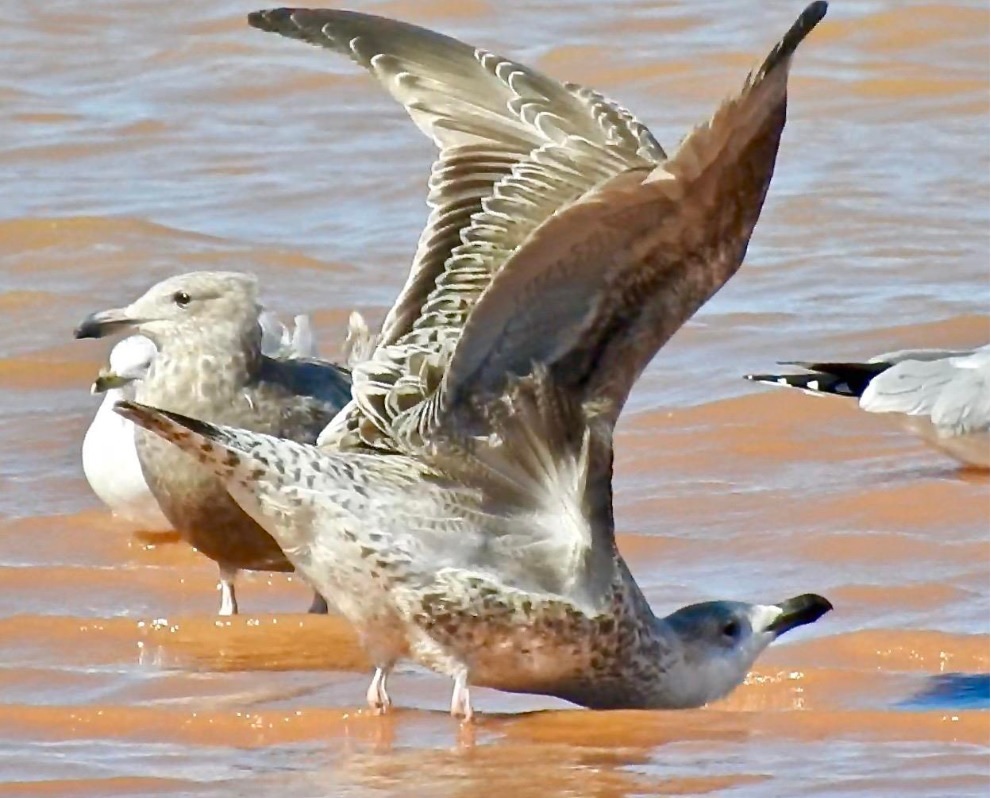
Photo by J. V. Remsen
One first-cycle immature (2018-021) on 4 February 2018, Cameron: Broussard Beach;
Paul E. Conover (ph).

Photo by Paul E. Conover
One first-year immature (2021-001) on 4-12 January 2021, East Baton Rouge: Baton Rouge landfill area, West Irene
Impoundments; Daniel F. Lane (ph; https://ebird.org/checklist/S78692204;
https://ebird.org/checklist/S79159757) and Oscar Johnson (ph; https://ebird.org/checklist/S79163906).
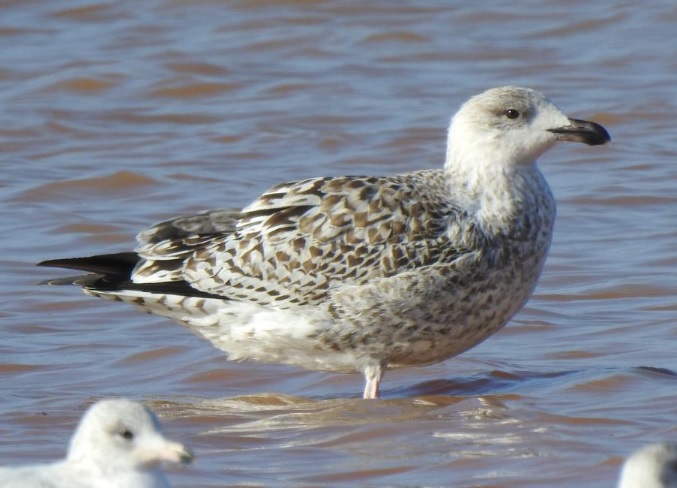
Photo by Daniel F. Lane
One (2023-013) on 23 and 26 April 2023, Cameron: Rutherford Beach, east end; Paul E. Conover (ph) and Erik I.
Johnson (ph).
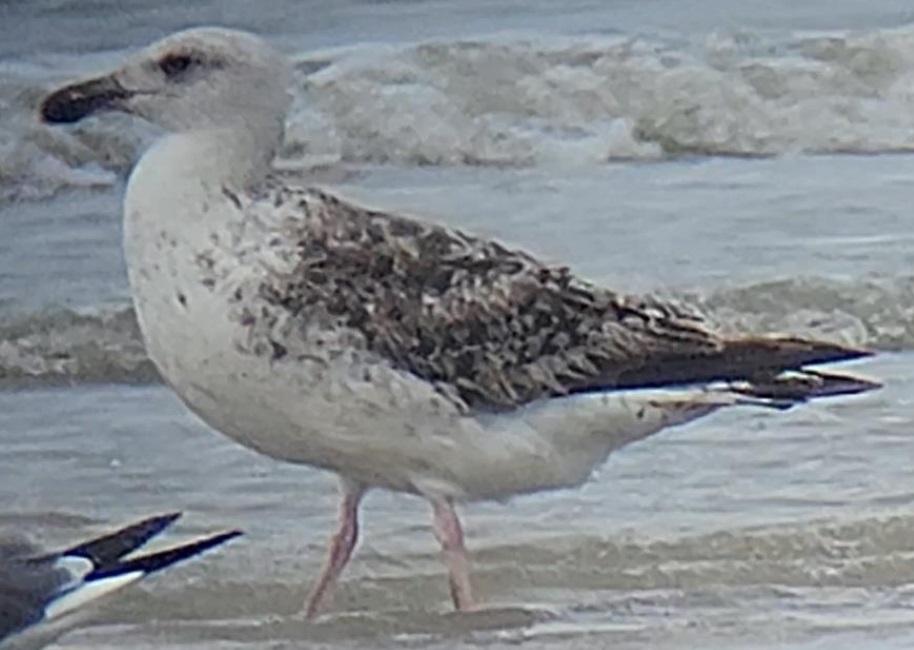
Photo by Paul E. Conover
An immature (1982-45) on a beach near Johnsons Bayou, Cameron Parish on 19 December 1982.
One (1989-115) on 28 Apr 1989, Cameron: Cameron, East Jetty; AB 43(3): 493. This record received a non-accept vote on its second circulation (3-4), but was recirculated at the request of one of the Members, so that other Members could review his comments. The record received a 4-3 vote on the third circulation and went to a Discussion Vote. Following discussion, the record was not accepted by a vote of 5-2. There were no photographs to support the identification; the gull was observed at a distance and was in very worn first basic plumage. The submitting observers based their identification on relative size and overall appearance, supported by their experience with identification of various gull species. Members voting in favor of this record were satisfied with the description and were reassured by the competence of the observers. The two ultimate dissenting Members were concerned that the bird was never observed in flight, and also that the description did not adequately eliminate a variant Herring Gull or a hybrid Great Black-backed X Herring gull. They also pointed out that, when the record occurred in 1989, there were still few accepted records of this species for the state, and even fewer as far west as Cameron Parish.
One very worn bird in first alternate plumage (1989-122) on 3 June 1989, Cameron: Rutherford Beach. Photographs included with this record did not support the identification of a Great Black-backed Gull and did not eliminate the possibility that the bird was instead an atypical Herring Gull.
One in first basic plumage (1990-9) on 18 Feb. 1990, Cameron: just W of (town of) Holly Beach (AB 44(2):282). The supporting details were exceptionally brief and not adequate to identify this species.
One adult almost in breeding plumage (1994-010) on 15 February 1994, Jefferson: Grand Isle, Grand Isle SP. This sight record had a rudimentary description, relying mainly on size and mantle color for the identification. Leg color was not seen and primary pattern was not described. Following Discussion, two Members continued not to accept on grounds of an insufficient description and noting that there were only sixteen accepted records prior to this sighting.
One first year (1995-075) on 4 March 1995, Lafourche: Fourchon Beach (ph). Following Discussion, two Members remained concerned that relative size (compared to adjacent Herring Gulls in photos), bill size, and presence of a Herring-like pale inner primary flash did not support identification as a pure Great Black-backed Gull.
One first winter (1995-100) on 26 November 1995, Orleans: New Orleans, Seabrook Bridge (ph). All Members agreed that the photos did not support identification of this species.
One adult breeding/alternate plumage (1996-086) on 28 April 1996, Cameron: Broussard Beach (ph). This record was originally submitted as a Kelp Gull (1996-084, reviewed and not accepted). It was resubmitted as a Great Black-backed Gull by other observers, but the original photos were of limited use, there were no additional photos, and some critical features were not studied. Ultimately, a majority of Members could not be convinced that the identification was certain beyond a reasonable doubt.
One presumed third-year (1996-049) on 19 October 1996, Lafourche: Fourchon Beach. Photographs submitted with this record, as well as the description by the observer, indicate that the mantle color was too pale for a pure Great Black-backed Gull and more suggestive of a Great Black-backed X Herring gull hybrid. This report was not accepted following a Discussion Vote.
One adult (1997-46) on 2 January 1997, Grand Isle CBC (no specific locality). The bird was not seen in flight. Part of the description indicated �paleness� (used to exclude a Kelp Gull), which troubled at least one Member. Although the observer reported that he was familiar with this species, all Members believed that the description was inadequate to support the identification. Lack of a specific locality was also considered a problem.
One first-year (1997-055) on 13 September 1997, Plaquemines: approximately 7.5 mi. N of the mouth of Southwest Pass of the Mississippi River. During a Fourth Circulation discussion vote, all Members agreed that the description was suggestive of Great Black-backed Gull and that the reporting observer was probably familiar with this species. However, the bird was not seen in flight and, therefore, critical marks such as the tail pattern could not be evaluated to eliminate potential hybrids, especially a Great Black-backed X Herring hybrid. The record was considered not accepted 2-7.
One first-year immature (1998-045) on 3 April 1998, Gulf of Mexico: 77 mi. S Pecan Island, Vermilion 265 oil platform, N 28.5125o W 92.451111o. Most Members agreed that the long distance and brevity of the observation, combined with the observer only being 85% confident of the identification, did not warrant acceptance.
One first-year plumage (1998-165) on 16 April 1998, Lafourche: Fourchon Beach, � mi. E of entrance road. All members believed that the bird may have been correctly identified, but the description provided little to go on other than that the bird was large and had checkered upperparts. There were also concerns that the possibility of a hybrid was not adequately dealt with in the report, especially considering that a number of hybrids and/or suspected hybrids have occurred in SE Louisiana.
One adult (2000-047) on 30 September 2000, Lafourche: � mi. W Elmer�s Island (ph). In the photos, the bird is distant and partially obscured. Also, the bird was not seen in flight. These factors caused a majority of Members to have concerns about the identification and whether other species or hybrids could be decisively excluded.
One adult in definitive non-breeding plumage (2004-045) on 7 October 2004, Cameron: Holly Beach, ca 2 mi. W of town of Holly Beach. Description did not eliminate other species or hybrids.
One in 1st basic plumage (2004-55) on 22 Dec 2004, Jefferson: Grand Isle, Grand Isle State Park near Gulf of Mexico fishing pier. Most members believed that the photographs were more suggestive of a Herring Gull.
One in first-year plumage (2005-023) on 10 September 2005, Cameron: Cameron, East Jetty. The description was not convincing, especially considering the relatively early fall date.
One adult (2006-27) on 12 October 2006; Red River: Lock and Dam No. 4 - flying above the Red River near the big pond ca 0.5 mi. in from Hwy. 1. The description was considered insufficient, especially for such a far-inland sighting.
One basic-plumaged adult (2006-46) on 29 October 2006, Lafourche: beachfront 1 mi. SSW of Port Fourchon (ph). This record went to Discussion where we not only discussed this record specifically but Great Black-backed Gull records in general. Members expressed concern that a hybrid could not be ruled-out by characters described by the observer, such as mantle color, and size and details of mirrors vs. tip on P10.
One third-year or older (2006-033) on 29 October 2006, Lafourche: between Fourchon Beach Rd. and Port Fourchon. The observer did not see this bird well enough for a certain identification, and the ID was largely based on the fact that one had been seen at this site recently.
One third-year (2007-023) on 6 April 2007, Jefferson: Grand Isle, Grand Isle SP. Most Members believed that the identification was possibly correct based on the bird�s reported large size and proportions. Two Members remained unconvinced that other large, dark-backed gull species or hybrids, and especially Great Black-backed X Herring gull (which are occasionally found in the state) were adequately eliminated.
One adult (2010-127) on 6 February 2010, Lafourche: beach W Elmer�s Island WMA, N29.14o, W90.13o (ph). This report was supported by photographs and went to Discussion. Three dissenting Members believed that photos better suggested a hybrid based on the paler-than-expected shade of the mantle.
One 2nd cycle (2010-26) on 23 May 2010, Cameron: Cameron, East Jetty at mouth Calcasieu River. This second cycle bird beginning second prebasic molt (inner primaries shed or growing in) retained a mix of juvenal and first basic feathers (wings/back, etc.). Although worn, this individual did not appear to show the typical wing covert checkering of a Great Black-backed Gull. Except for its reported bulk, photos suggested (showing rump and tail and extensive blackish tail band) a Lesser Black-backed Gull. However, the paleness in the inner primaries should eliminate a pure Lesser Black-backed, which would have more uniformly dark inner primaries and may not have looked so hefty to the reporting observer. Members agreed that photographs may better support identification of a �Chandeleur Gull� or another X Herring Gull hybrid such as with Great Black-backed or Lesser Black-backed gulls.
One third-year (2010-115) on 16 August 2010, Cameron: beach 1 mi. W town of Holly Beach; (ph). All Members agreed that the photographs were not sufficient to eliminate other species or hybrids.
One third-year (2010-097) on 24 September 2010, Plaquemines: beach on Chaland Headlands (ph). The description was considered by some Members too brief and the observer did not discuss or eliminate a subadult Kelp or darker-mantled versions of Chandeleur Gull, which the photographs also did not eliminate.
One in definitive plumage (2012-150) on 25 November and 6 December 2012, Terrebonne: Isles Dernieres, Whiskey Island, bay side restoration area. Observations on two dates were initially reviewed as separate records (add 2012-151) that were later combined because most Members believed that a single individual was probably involved in both sightings. Once combined, the record was resolved during a Fourth Circulation Discussion Vote. Following discussion, all Members believed that the very distant photos and rudimentary descriptions did not adequately support the identification and exclude other species or hybrids.
One first-winter immature (2014-026) on 9 February 2014, Plaquemines: Coquille Point. This individual was superficially similar to an immature Great Black-backed Gull but the photographs suggest that it was probably older (second-winter plumage) than thought at the time of the observation (first-winter). Problematic for a pure Great Black-backed Gull were the mostly dark tail. (Great Black-backed tail should be white with black subterminal band), fairly pronounced pale inner primary panels on the wings,and bill proportions that seemed too small for a pure Great Black-backed. In combination, these features were more suggestive of a hybrid Great Black-backed X Herring gull, and the report was determined unacceptable.
One juvenile (2014-094) on 12 October 2014, Jefferson: Elmer�s Island (ph). In the report, it was assumed that this was the same as a previously accepted individual (2014-071; 18th Report/2015 Newsletter). Most Members believed that the photo better fit a Herring Gull and not 2014-071, and, regardless, there was generally not enough detail (based on the quick fly-by observation) to rule out superficially similar species or hybrids.
One first year (2015-011) on 13 January 2015, East Baton Rouge: North EBR landfill, West Irene Rd. impoundments (ph). The bird was seen at a distance and never in flight. Photos were suggestive of this species, but some features of the bird seemed inconsistent or ambiguous for Great Black-backed and the documentation lacked a thorough analysis addressing these potential problems. A majority of Members voted not to accept.
One adult (2015-017) on 8 February 2015, Jefferson: Elmer�s Island, 0.25 mi. E intersection of road and beach. Quite possibly correctly identified by an observer who claimed to be familiar with this species. However, several key characters were not observed during this brief sighting. There were no other reports of an adult Great Black-backed Gull from this well-covered location during winter 2014-2015.
One first cycle immature (2016-031) on 1 October 2016, Cameron: Rutherford Beach opposite Willow Island, 5 mi. E Cameron, N29.776585o, W93.229628o (ph). This record went to a Discussion vote at the 2019 Annual Meeting. A series of photos showed a bird that was at least superficially very similar to a juvenile Great Black-backed (overall size/proportions, apparent huge bill, and plumage pattern), with Herring and Lesser Black-backed present for comparisons. However, photo lighting conditions were poor and resulted in different interpretations of characters by different Members. In some photos, overall plumage, especially face pattern and back/wing mottling, and overall shape seemed more suggestive of a large Lesser Black-backed Gull, possibly indicating that the bird was a hybrid. Ultimately, all but two Members could not support an identification as a pure Great Black-backed Gull.
One adult in basic plumage (2000-013) on 5 February 2000, Lafourche: Fourchon Beach (ph). Although submitted by experienced observers and including a relatively convincing description, most Members still believed that the photo was troublesome: mantle was not blackish (adjusting contrast and exposure of photos does not darken the gull’s mantle), and the photos did not reveal the wing tip pattern or the color of legs/feet. Some Members believed that a hybrid Great Black-backed X Herring gull was more likely.